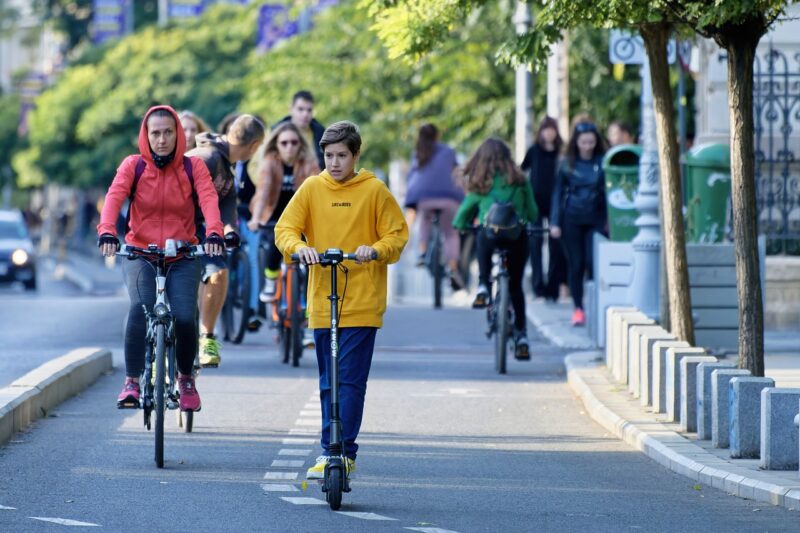The Art of Planning Bike-Friendly Cities and What It Takes to Get It Right
November 11, 2024

As urban populations continue to grow and climate concerns heighten, the need for sustainable transportation solutions has never been more critical. Cities around the world are beginning to prioritize bike-friendly infrastructure, recognizing that cycling can effectively reduce congestion, cut emissions, and promote healthier lifestyles. But what does it take to design a city that supports cycling effectively? This article delves into the art and science of planning bike-friendly cities, exploring essential elements, successful case studies, and the challenges that need addressing.
1. Why Bike-Friendly Cities Matter
Bike-friendly cities are not just a trend; they represent a shift towards sustainability and urban resilience. The benefits of incorporating cycling into urban planning include:
- Reduced Traffic Congestion: With more people cycling instead of driving, the number of vehicles on the road decreases, leading to less traffic, faster commute times, and reduced stress for all road users.
- Lower Carbon Emissions: Biking produces zero emissions, making it a crucial part of combating climate change. Promoting cycling helps cities achieve their environmental targets.
- Improved Public Health: Cycling is a form of exercise that can significantly enhance physical health. More cyclists translate to fewer health issues related to inactivity, obesity, and pollution.
- Economic Benefits: Bike-friendly cities often see increases in local commerce as cyclists stop at shops and cafes along their routes. Moreover, investing in bike infrastructure is typically more cost-effective than expanding roadways for cars.
As cities strive to create environments supportive of cycling, understanding what constitutes a bike-friendly city becomes imperative.
2. Key Elements of Bike-Friendly City Planning
Bike-friendly cities share several design elements that promote cycling. These include:
- Dedicated Bike Lanes: Protected bike lanes are essential to ensuring cyclists can navigate the city safely, separate from vehicular traffic. Cities must invest in well-marked and physically separated lanes.
- Interconnected Route Networks: Cyclists should have a comprehensive network of bike paths, providing access to key destinations such as workplaces, schools, parks, and public transport hubs.
- Bike Parking and Storage: Safe, accessible bike parking is crucial for encouraging cycling. This includes bike racks, bike lockers, and facilities with secure housing for bicycles at transit stations.
- Traffic Calming Measures: Implementing traffic-calming strategies, such as speed bumps, roundabouts, and reduced speed limits, can enhance safety for cyclists and encourage more people to take up cycling.
- Education and Outreach: Promoting cycling through educational programs and campaigns can instill awareness about the benefits and safety of cycling, ultimately fostering a culture that prioritizes biking.
- Integration with Public Transport: Facilities for transporting bicycles on public transit, such as bike racks on buses and trains, make cycling a convenient option for commuters.
Comprehensive planning involves not just the physical infrastructure, but also supportive policies that encourage cycling.
3. Successful Case Studies
Several cities worldwide have successfully transformed themselves into bike-friendly urban environments. Here’s a closer look:
- Copenhagen, Denmark: Renowned for its cycling culture, Copenhagen boasts over 390 kilometers of bike lanes. The city has prioritized cycling in its urban development, investing in infrastructure and policies that support bike use. An astonishing 62% of residents commute by bike daily.
- Amsterdam, Netherlands: Another icon of cycling, Amsterdam has created a vast network of bike paths that account for 38% of all trips made in the city. Its model demonstrates how integrated city planning can foster a thriving cycling culture.
- Portland, Oregon, USA: Portland has been a frontrunner in North America for bike-friendly policies. Its investment in educational initiatives, bike-sharing programs, and dedicated bike lanes has seen cycling rates double in the last decade.
- Barcelona, Spain: The city’s ‘superblocks’ initiative has reduced traffic and incorporated bike lanes, allowing residents to enjoy a more pedestrian and bike-friendly environment. The project aims to reclaim public space for citizens and encourage cycling.
These case studies provide valuable insights and inspiration for other cities looking to improve their cycling infrastructure.
4. Challenges in Implementing Bike-Friendly Infrastructure
Despite the benefits and proven strategies from successful cities, several hurdles must be addressed in different urban settings:
- Resistance from Vehicles Users: Car-centric cultures may resist the changes required to prioritize cycling, leading to pushback against bike lanes and infrastructure changes.
- Funding and Resources: Many cities struggle to allocate financial resources for cycling infrastructure, often prioritizing car-related projects instead.
- Space Limitations: In densely populated areas, finding space for dedicated bike lanes without compromising existing road or foot traffic can be challenging.
- Maintenance of Infrastructure: Ensuring that bike lanes are well-maintained and clear of debris is vital for cyclist safety but often overlooked in urban budgets.
- Cultural Perception: Changing societal perceptions about cycling as a primary mode of transportation requires consistent education and outreach efforts.
Overcoming these challenges is crucial for fostering environments where cycling can thrive.
5. The Future of Cycling in Urban Areas
As cities look to address climate change and improve urban mobility, the future of cycling appears promising. Innovations in bike-sharing programs, e-bikes, and smart city technologies are paving the way for a more integrated cycling experience.
Artificial intelligence and real-time data can enhance bike route planning and improve the safety and efficiency of urban cycling.
In conclusion, planning bike-friendly cities is about more than just bikes; it requires a holistic approach that integrates cycling into the urban fabric. By prioritizing infrastructure, education, culture, and policies, we can create sustainable and healthier urban spaces that benefit all residents.
Cities around the globe have the opportunity to learn from successful examples and create environments where cycling is both safe and enjoyable, making it a vital part of a comprehensive transportation strategy. The journey toward transforming our cities for cycling is just beginning, and with concerted efforts, we can pave the way for a bicycle-friendly future.





